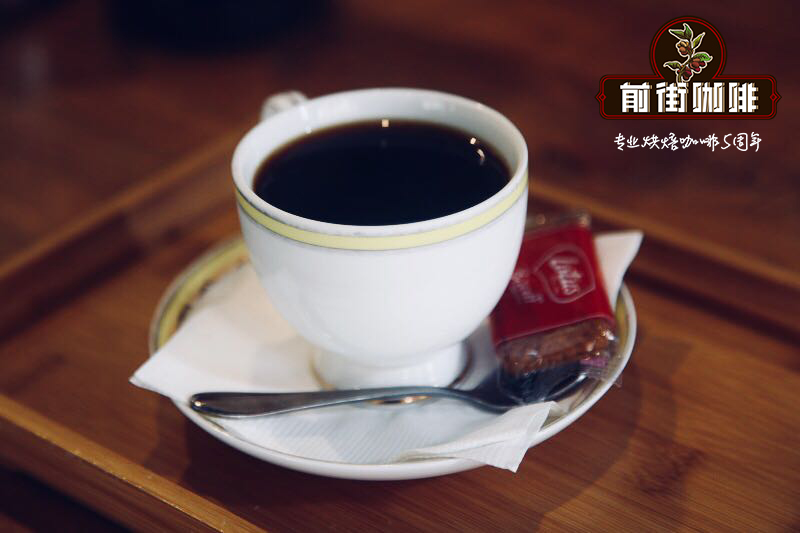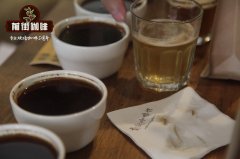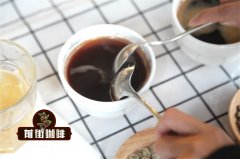Kenya Coffee Origin Chania Manor Introduction French Missionary Bourbon Sunburn Flavor Description and Brewing

Professional coffee knowledge exchange more coffee bean information please follow the coffee workshop (Wechat official account cafe_style)
[Bourbon, a French missionary in Haniyeh Manor, Kenya]
Country: Kenya
Area: card (Thika)
Processing plant: Haniyeh Manor (ChaniaEstates)
Altitude: 1525 m
Variety: French missionary bourbon species
Treatment: sun treatment
01 | Manor introduction
The Chania and Oreti estates are the only large and medium-sized private coffee plantations in Kenya, and the Harries family has managed the production of the coffee farms since 1904. The Haniyeh Manor (Chania Estate) and the Oreti Manor (Oreti Estate) are bordered by the Haniyeh River, with dams and reservoirs and nearly 200 acres of land, where forests are planted on the riverbank to protect birds and wildlife.
The landowner BoyceMarquis Allen Harries took over Estates and A.I.R in 2013. Family business (Harries&Son Ltd.). Today, 40 employees work for Boyce, many of whom have served the Harries family for three generations, and employees have their own optional committees that meet monthly to discuss community safety, social and health issues. In addition to taking care of their own workers, the Harries family donated land to the Thika City Council and co-founded the Wabeni Institute of Technology, which teaches practical skills such as clothing, machinery and carpentry to help local residents make a living.
02 | Origin description
Kenya Sika Plateau
Kenya is located in the Kiambu coffee-growing region in the highlands east-central of the Great Rift Valley, with Sika as a secondary area. Located at the foot of the Aberdare Ridge, the soil is red volcanic soil, rich in organic matter. Due to the mild climate and moderate rainfall in the Kiambu region, coffee farmers can harvest twice a year-from May to July and from September to December.
There are some large coffee farms in Kiambu, and small farmers work closely with their cooperative organizations, most of whom have their own processing plants, providing growers with a better choice than buying and selling coffee. Farmers process raw coffee beans in their factories and get a reasonable price at auction.
Chania Estate's unique red volcanic soil, coupled with suitable coffee growth temperature and rainfall, coupled with excellent natural environment, create the unique flavor of French missionaries in Sikahania.
03 | Analysis of raw beans
French missionaries brought bourbon trees to Kenya around 1892-1893. This native bourbon tree species, known as renchMission Varietal (French missionary species), avoids scientific improvements in the planting process and retains the original flavor of bourbon.
Kenyan "SL28" and "SL34": the bourbon line, screened and cultivated by French and British missionaries and researchers in Kenya in the early 20th century, has adapted to Kenya's high-concentration phosphate soil for a century, giving birth to Kenyan characteristics of sour elves. Top Kenyan coffee comes from these two varieties, but it loses its flavor when transplanted elsewhere.
Kenyan coffee grades are divided into seven grades according to the size of coffee beans and six grades according to taste. The best coffee in Kenya is bean berry coffee (PB), followed by AA++, AA+, AA, AB and so on. The fine coffee is shiny, delicious and slightly alcoholic. "Kenya AA" is particularly well received in terms of taste.
Graded according to the size of beans:
The best coffee grade in Kenya is bean berry coffee (PB), followed by AA, AB and so on.
PB (PeaBerry) round beans: this is the grading for small round beans. This means that there is only one stone in the coffee fruit, not the common two kernels.
AA: this is a more common grade. Coffee beans are larger in size and have a particle size higher than 18 mesh or 7.22mm. This kind of beans usually get the highest price.
AB: this grade coffee bean combines A (particle size 16 mesh or 6.80mm) with B (particle size 15 mesh or 6.20mm); accounts for about 30 per cent of Kenya's annual coffee production.
04 | introduction to the handling method
This bean is treated in the sun, which adds solidity and sweetness to the already rich and sour bourbon coffee in the process of exquisite sun exposure. With a limited number of sun batches, this coffee is completely dependent on the natural climate.
05 | Baking analysis
The bean density is medium, the baking power is medium, and the heating rate of growing beans is faster during the baking process, so we should reduce the firepower at 150℃, 160℃ and 170℃ to prolong the Mena reaction time and prevent the beans from heating up too much. The first explosion starts at about 8 minutes and 15 seconds at 186 ℃. At the same time, the firepower is reduced and the throttle is opened to develop the flavor. 194 ℃ at 2 minutes.
Roaster Yangjia 600g semi-direct fire (baking capacity 300g)
The furnace temperature is preheated to 170℃ into the pot, the throttle is opened at 3j30s, fire is fired, the firepower is adjusted 140,the throttle is unchanged, the temperature recovery point is 1`28``, the firepower is reduced to 110and the throttle is opened to 4 at 140℃. 4`20` turns yellow, the smell of grass disappears, enters the dehydration stage, the firepower is reduced to 90, and the throttle is kept at 4. The firepower was reduced to 90, 70 and 50 again at 150℃, 160℃ and 170℃.
After dehydration, the bean surface appears wrinkles and black markings, and the taste of toast changes to coffee, which is a prelude to an explosion. Pay attention to the sound of an explosion. When the blast starts at 8`13``, the throttle is all open for 5, and the firepower is adjusted to 30 at the same time. After an explosion, the development time is 2 minutes, and put into the pot at 194 ℃.
This coffee has a good flavor, but the defect rate is high. Please choose it carefully before baking. Dry aroma with sun fermentation, dried fruit and vanilla, sipping can drink caramel, vanilla, comprehensive fruit, solid juice, finish with berries, strong jackfruit, coffee flowers. The overall performance has the wild regional flavor of Africa, which is suitable for sipping and tasting slowly, and the complex aroma is difficult to give up.
06 | Cooking data
Recommended cooking method: hand flushing
Degree of grinding: 3.5 (Fuji R440, Japan)
Water temperature: 90 ~ 91 °C
V60 filter cup, 15g powder, grinding 3.5.The ratio of water to powder is close to 1:15
Steaming in 30 grams of water for 30 seconds
Segment: water injection to 120ml cut off, slow water injection to 225ml
That is, 30-120-75, the total extraction time is about 2 minutes.
Other suggestions for trickling extraction:
Normal pressure, recommended grinding degree of 3.5-4 / water temperature 90 °C
Philharmonic pressure, recommended 2.5 grinding degree, water temperature 90 °C
Hand punch: 3.5 degree of grinding, water temperature 91 °C
3.5 Grinding-90 degrees water temperature
Related recommendation: world Coffee Manor area introduction: detailed introduction of coffee producing country Kenya
Important Notice :
前街咖啡 FrontStreet Coffee has moved to new addredd:
FrontStreet Coffee Address: 315,Donghua East Road,GuangZhou
Tel:020 38364473
- Prev

Introduction of Kiambu producing area of Kenyan Coffee and Coffee Bean flavor and taste
Professional coffee knowledge exchange more coffee bean information please follow the coffee workshop (Wechat official account cafe_style) KenyaAB Kiambu Gitwe Kenya AB Komatina cranberry production area: Qianbu Micro area: Gitwe soil: volcanic clay altitude: 1400 m-1800 m varieties: Lmur28, SL-34, Ruiru 11 treatment: Kenyan 72-hour washing 01 | production
- Next

Introduction of Songgli treatment Plant and Coffee Bean Flavor in Lumuchia Cooperative of Kenyan Coffee producing area
Professional coffee knowledge exchange more coffee bean information please follow the coffee workshop (Wechat official account cafe_style) Kenya Nyeri Rumukia FCS Thunguri Factory AA TOP Kenya Lumuchia Cooperative Songri processing Plant AA TOP flavor description: grinding open can feel the fragrance of flowers, citrus, black tea, BlackBerry, with a little mint, blackcurrant
Related
- Does Rose Summer choose Blue, Green or Red? Detailed explanation of Rose Summer Coffee plots and Classification in Panamanian Jade Manor
- What is the difference between the origin, producing area, processing plant, cooperative and manor of coffee beans?
- How fine does the espresso powder fit? how to grind the espresso?
- Sca coffee roasting degree color card coffee roasting degree 8 roasting color values what do you mean?
- The practice of lattes: how to make lattes at home
- Introduction to Indonesian Fine Coffee beans-- Java Coffee producing area of Indonesian Arabica Coffee
- How much will the flavor of light and medium roasted rose summer be expressed? What baking level is rose summer suitable for?
- Introduction to the characteristics of washing, sun-drying or wet-planing coffee commonly used in Mantenin, Indonesia
- Price characteristics of Arabica Coffee Bean Starbucks introduction to Manning Coffee Bean Taste producing area Variety Manor
- What is the authentic Yega flavor? What are the flavor characteristics of the really excellent Yejasuffi coffee beans?

